We have just published our first-ever print newsletter to showcase some of our favorite procedures and patients. You can take a look below!
The jawline can be a crucial part of facial aesthetics. A strong jawline in men is often associated with attractiveness and confidence. For women, a jawline can represent youth and beauty.
Allergan (the maker of BOTOX and JUVEDERM) has just released a filler created specifically for the jawline. This long-lasting filler is now available at aesthetic practices for patients over the age of 21 with moderate to severe loss of jawline definition.
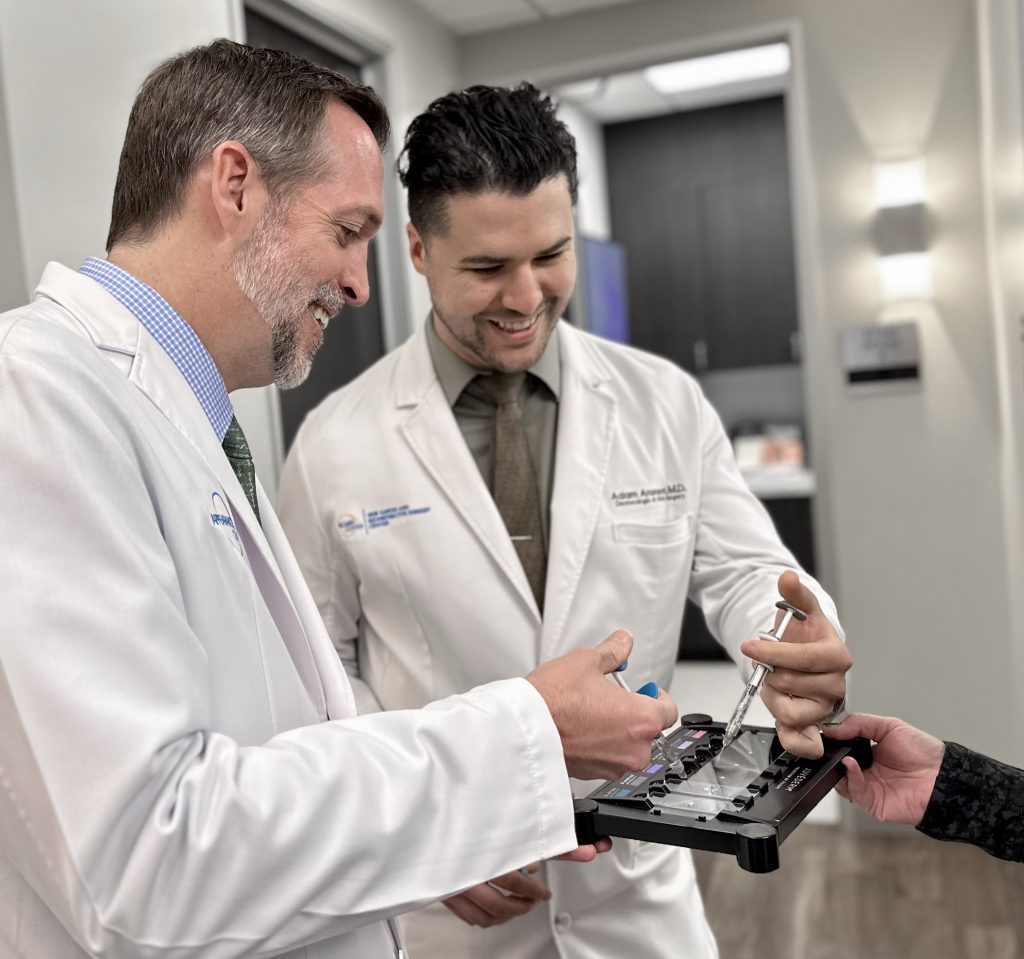
VOLUX is a slightly more cohesive and thicker formula than JUVEDERM VOLUMA. Both of these fillers build volume and create a lift beneath the skin, but while VOLUMA is FDA-approved for the chin and cheeks, VOLUX is FDA-approved to treat the chin and jawline.
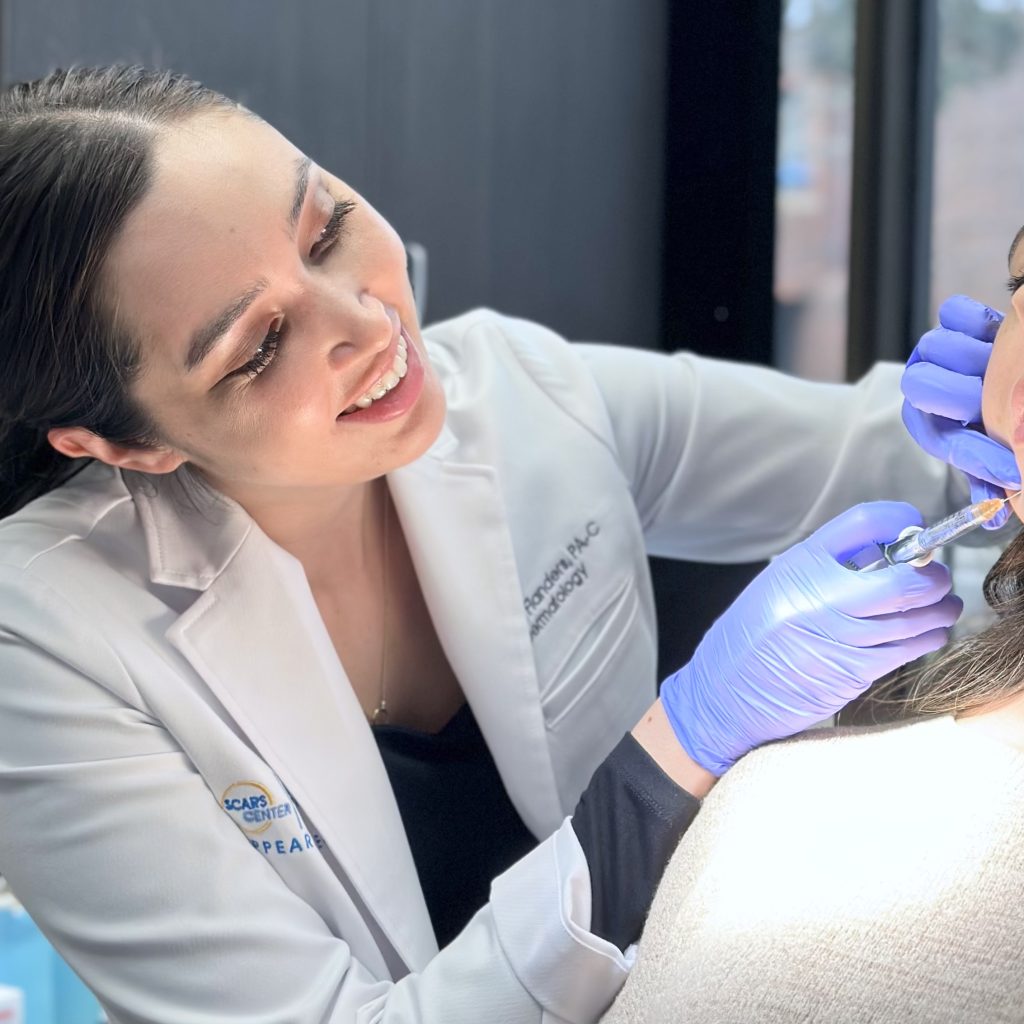
The procedure only takes a few minutes, and any swelling is dramatically improved within 48 hours. Results last between 12 and 18 months.
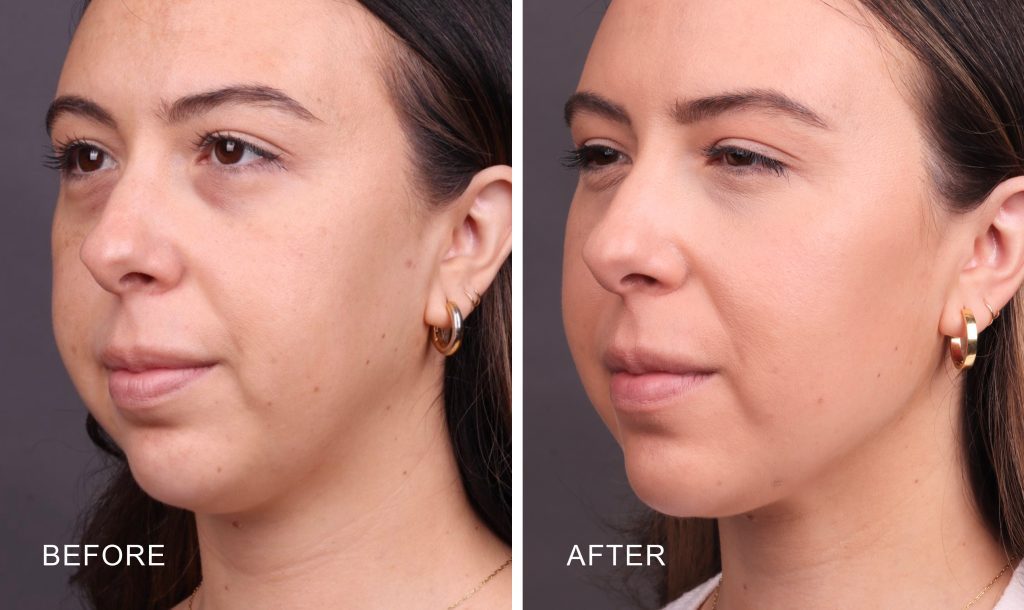
All of our providers are expert injectors and can help you to assess your jawline and other aspects of facial aesthetics. Call us to schedule a consultation.
A lip lift is a surgical procedure that shortens the space between the nose and the top of the lip. This increases the amount of pink lip tissue that’s visible, which makes the lips look fuller and more pronounced. It can also increase how much your upper center teeth show when your lips are resting. It leaves a small scar at the base of the nostrils, but it is usually undetectable after a few weeks.
It’s a good option for people who want to add height instead of volume to their lips. Younger people who haven’t achieved the look they want from fillers, or if they find that fillers make their lips look unnaturally plump or duck-like, may prefer a lip lift.
And a lip lift is a good option for reducing the space between the lips and the nose. With age, this space can increase and can make the upper lip look thinner.
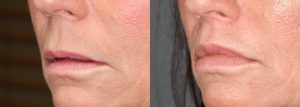
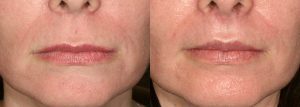
Are you looking for a “snatched” jawline? Are you tired of pushing yourself at the gym but still seeing no changes to your double chin? You are not alone! A stubborn double chin or sometimes called extra submental fat may not be your fault.
Age, genetics, and lifestyle (i.e. diet and exercise) influence the size and stubbornness of a double chin. Achieving a tight and defined jawline depends on several factors including our chin position, amount of
submental fat, and neck skin sagging.
The Youthful Neck
A youthful neckline conveys a sense of health, confidence, and attractiveness. We associate a beautiful neckline with a strong chin and jawline that creates a natural and defined transition from the jaw to the neck.
Understanding the Double Chin
Not all double chins are the same. The double chin seen in younger patients (ages 20-30s) with fullness below the chin is typically due to stubborn, excess fat just below the level of the skin (i.e. pre-platysma fat). These individuals are great candidates for less invasive treatments such as fat dissolvers (i.e. Kybella), Submental Liposuction, and occasionally Isolated Deep Neck Contouring.
Sometimes, these individuals also have a smaller, weaker chin, which makes the “double chin” even more noticeable. For these patients, I like to augment the chin with either filler or a more permanent solution such as a chin implant.
If you’re struggling with a “double chin” but none of this applies to you, don’t worry! We’re only scratching the surface of double chins on this blog. Stay tuned for our next blog where I’ll discuss more advanced treatment options.
Dr. Simon Madorsky, facial plastic surgeon, addressed an audience of California Dermatologists at the CalDerm Symposium, September 23-25 in Carlsbad. He spoke on Fillers and Nuromuscular Toxins (such as Botox), providing advice and tips for these injectables, as well as explaining relevant facial anatomy.
He also spoke to the group about wound repair, including various skin flaps and grafts. These are used for both trauma and skin cancer reconstruction.
He had the chance to meet Dr. Sandra Lee, aka Dr. Pimple Popper!!
Dermal fillers, also called injectables, are a safe and effective way to enhance your appearance without the need for invasive surgery or downtime, but results are very dependent on the injector. At the Appearance Center, our providers are highly-trained medical professionals, familiar with the unique anatomy of the face, and have had extensive training and years of experience.
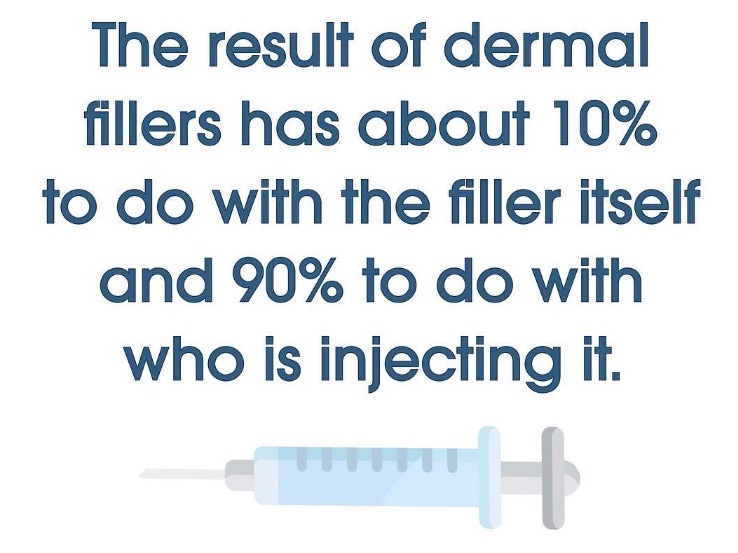
Dermal fillers can be used to address a variety of different cosmetic concerns – restoring lost volume to depleted areas, creating more attractive facial contours, and improving symmetry.
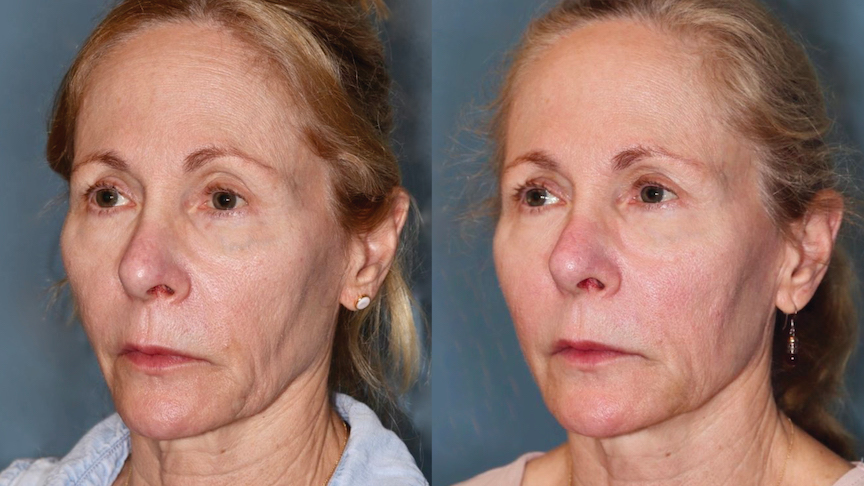
FIGHT THE SIGNS OF AGING
As the skin is subjected to elements over time, the appearance of a face changes. Dermal fillers reverse this by giving a person back the facial volume they may have lost. These fillers can also make the cheeks look more contoured, give a more defined jawline, and overall make a patient look refreshed.
One of the great things about dermal fillers is that virtually no recovery time is required. After their treatment session, patients can usually return to most activities right away.
More good news: The results of dermal fillers are not permanent. If you don’t love your results from dermal filler injections, take heart knowing the effects are temporary.
Filler technology enables results to last six to 18 months although there is variation between individuals, as well as according to the type, quantity and depth of the dermal filler placed within your skin.
In many cases, a skilled cosmetic eye can make more immediate corrections or improve upon your previous results. Our providers are also experienced with correcting over-filling or wrong-site filling done at other locations.
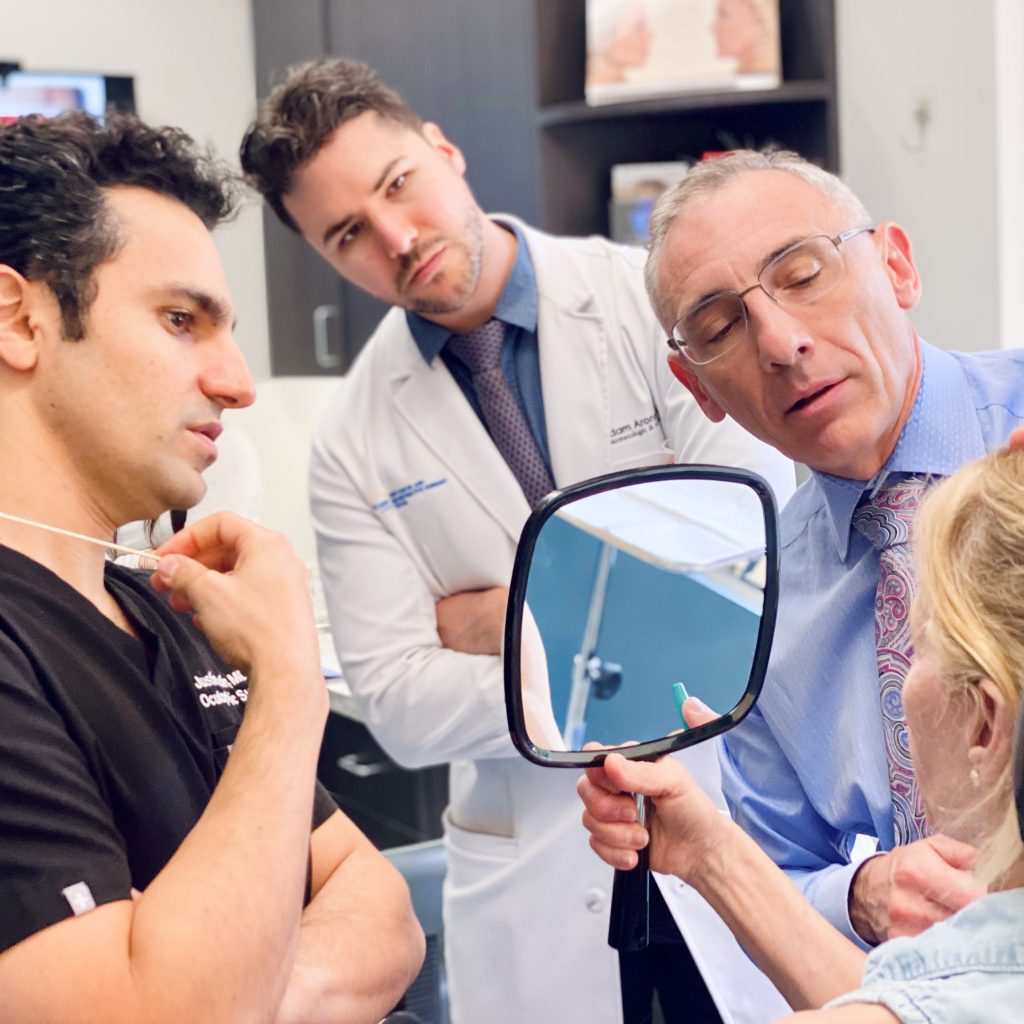
A Rhinoplasty, or nose job, is surgery performed to alter the way your nose functions and looks. According to the American Society of Plastic Surgeons, nearly 220,000 rhinoplasties are performed yearly, making this the most common facial plastic surgery procedure. Rhinoplasty can simultaneously help you improve breathing and achieve a more balanced appearance
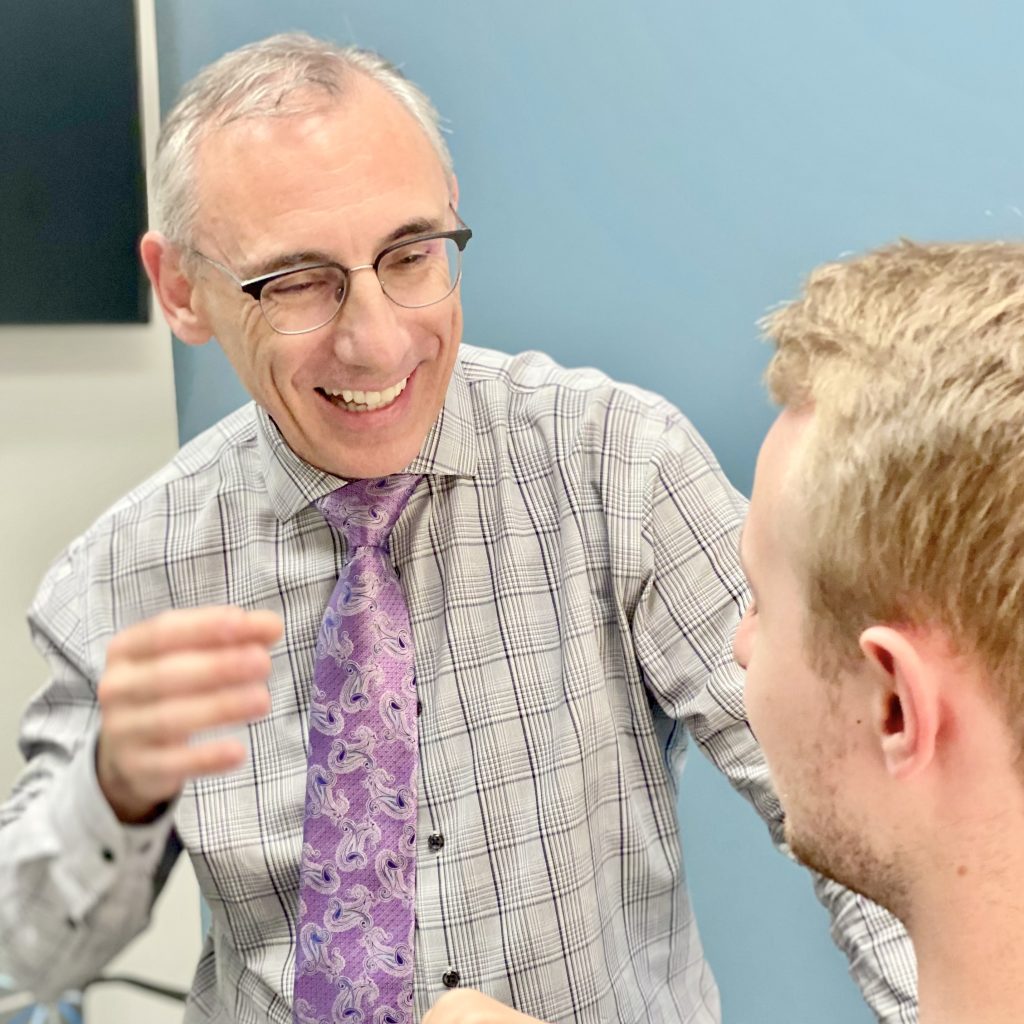
IS RHINOPLASTY RIGHT FOR ME?
A common medical reason for rhinoplasty is difficulty breathing through the nose. Nasal obstruction can cause problems with exercise, disturb sleep, contribute to snoring and sleep apnea, or interfere with other activities. If medical treatments (such as nasal spray or sleep apnea treatment) fail, surgery may be the next step. Rhinoplasty done for medical reasons such as these is often covered by health insurance.
WHAT ABOUT COSMETIC RHINOPLASTY?
Patients often ask, “While you’re in there, could you make other changes to my nose?” The answer is yes. The most common requests are reducing a nasal hump, refining the tip, or correcting asymmetries. These cosmetic changes, which are not covered by insurance, are frequently combined with functional rhinoplasty so there is only one recovery.
“I just want to look “x” years younger” is a common request in the dermatology or plastic surgery office. One way to accomplish that is to restore facial volume. Most of us may not initially recognize volume loss in our face because we see ourselves everyday. But the changes become stark when we look at old photographs. Restoring volume is an important and common approach to helping patients achieve the results they desire.
Hyaluronic acid injections, commonly known as “fillers,” are a popular way to increase facial volume. Injectable filler is relatively quick to perform, has minimal downtime, and provides immediate results. The main downside of filler is that the results are temporary, typically lasting between 6 and 18 months.
A more permanent way to increase volume is fat transfer. Fat is usually collected from the abdomen and strategically injected into areas of the face. It requires from 1 to 3 separate injections spaced 6 weeks apart to achieve results. Fat integrates well and the results last, which probably sounds great. But is there a catch?
Potentially. An important consideration of fat grafting is that the fat acts like the donor site (abdomen), not the recipient site (face). While people lose weight and volume in their face as they age, they often gain weight in other areas, including the abdomen. As a result, if the patient gains weight over time, the fat in the face will grow too. A well qualified doctor or PA will be able to make the appropriate judgment regarding the volume of fat appropriate to inject.
Because of fat’s potential to grow, the best candidates for fat transfer tend to be older patients, of stable weight, and if applicable, post-menopausal. Otherwise, filler is a great option to add volume and can be tailored as the patient ages.
Hyaluronic acid injections, commonly known as “fillers,” are a popular way to increase lip volume. Injectable filler is relatively quick to perform, has minimal downtime, and provides immediate results.
Not all patients will benefit from lip filler, especially patients with a long upper lip. In those cases, a surgical lip lift is the only option for lip enhancement.
A lip lift strategically removes skin from right beneath the nose. The lifted red lip becomes more exposed. This adds height to the red lip and the appearance of volume. The “duck lip” look is avoided. And best of all, the results are permanent.
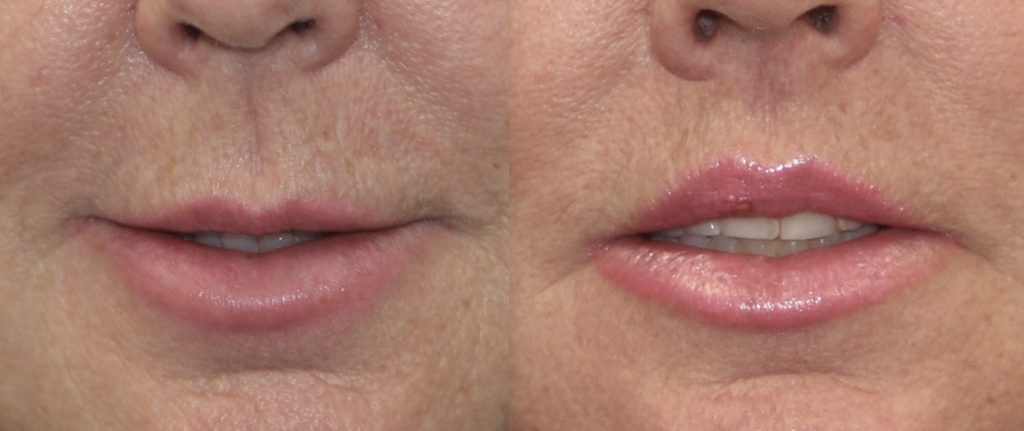
After the lip lift, the patient may be a better candidate for lip filler. The filler can add tasteful volume to the heightened lip, creating the perfect lips.
Bruising is common after surgery and filler injections. It usually peaks around 48 hours after intervention and then slowly resolves over 10 days. While most patients expect bruising after surgery, it is less accepted by patients after minimally invasive treatments such as filler.
Bruising from filler can be minimized by injecting with a cannula instead of a needle. Cannulas have blunt ends (unlike a needle which is sharp) and cause less trauma during the injection. Because there is less trauma, there is usually minimal, if any, bruising. However, some areas are likely to bruise because of anatomical reasons, even with the cannula technique.
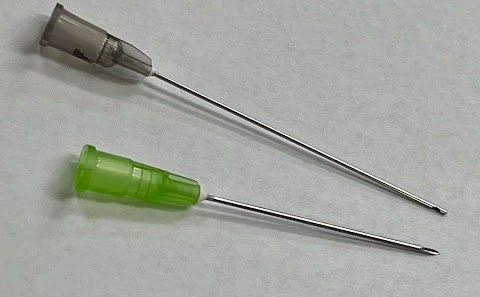
At the Appearance Center, bruising can be promptly treated with VBeam. Our V-beam pulsed dye laser has been extremely effective at eliminating early bruising. It is typically performed 24-48 hours after initial treatment (ie filler or surgery), and significantly reduces the bruise within 24 hours. In the event of significant bruising, we are pleased to offer complimentary v-beam treatment. As a result, patients can enjoy their results, bruise-free, as quickly as possible.
Fun fact: Whether the bruise is from a procedure or just an accidental trauma, the v-beam can speed up the recovery and get you looking good to go!

